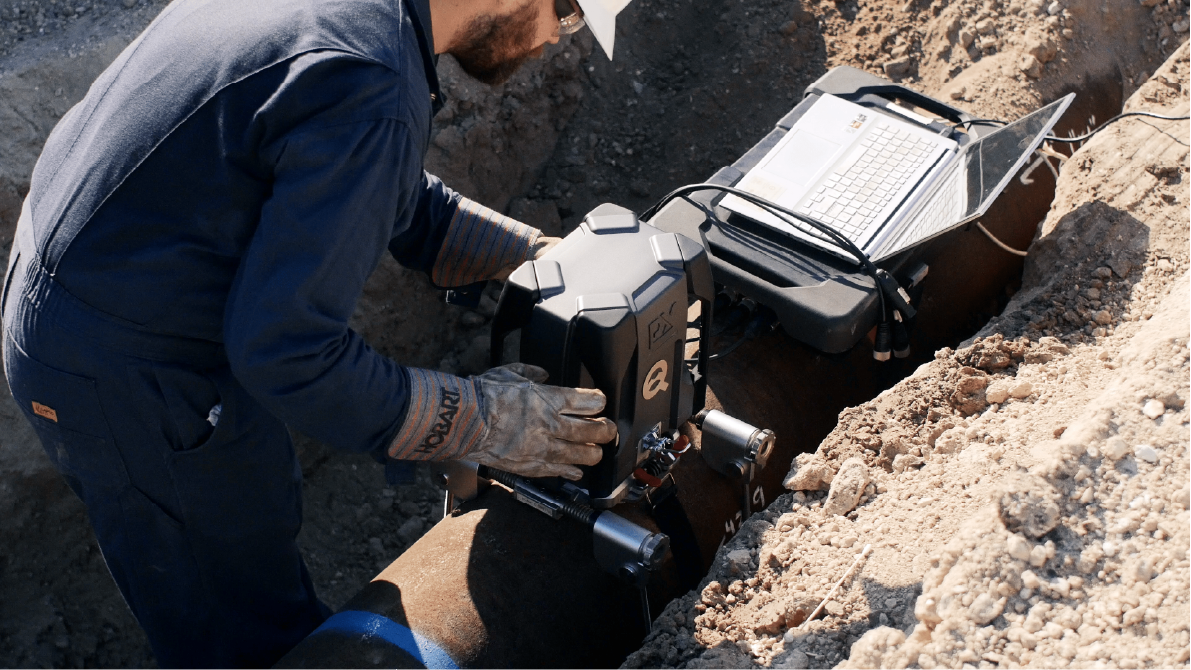In the United States alone, nearly 3 million miles of natural gas pipelines carry approximately 29.2 trillion cubic feet of natural gas to consumers across the country [1]. Under regulations such as PHMSA’s Mega Rule, robust records detailing pipe material properties (Grade) are required to ensure the ongoing integrity of this underground superhighway. But what happens when an unreliable tool is used and uncertain data is collected? In a new article published by World Pipelines, Plastometrex CEO, Dr James Dean, examines the critical role of material verification tools in pipeline integrity and explores the risks associated with inaccurate data.
When non-destructive evaluation (NDE) tools report unreliable material properties, pipeline operators are forced to choose between a costly shutdown or the possibility of a devastating failure. In an industry where operational downtime can mean millions lost, public safety is at stake, and reputational damage can have far-reaching consequences, decisions around pipeline integrity should be based on the highest-quality data available.
For this reason, vendors of the NDE equipment used in material verification have a responsibility to be transparent about the quality of data produced by their tools. Without this knowledge, pipeline operators are unable to make informed decisions regarding tool choice out in the field.
The Risks of Inaccurate Data
Pipeline operators already work hard to ensure they don’t run lines above safe limits, so overestimation is not the most common risk they face. Instead, the bigger issue often comes when tools underestimate strength. If a pipe is deemed weaker than it really is, operators are left with two costly options: derate the line, which can reduce capacity and lead to long-term revenue losses, or commission destructive testing to verify results.
In one example, covered in the World Pipelines Article, a North American pipeline operator was forced to pay over $800,000 after a conservative yield strength reading prompted them to physically remove and test the pipe, only to find that the pipe was in fact compliant. When operators don’t trust material verification data, they can’t make confident integrity decisions. This is why the greatest challenge isn’t the risk of a single bad outcome so much as uncertainty itself.
The Responsibility of NDE Vendors
For each questionable reading provided by material verification tools, operators face multi-million-dollar decisions that may have wide-spread consequences. NDE tool vendors have a responsibility to be fully transparent around the methodology, testing, and technology validation so operators can make informed decisions regarding their choice of tool.
- Has the equipment been tested across pipe grades, diameters, vintages and seam types, rather than just lab samples?
- What is the level of maximum overprediction associated with the tool?
- How sensitive is the data to real-world conditions, such as pipe vibration or extreme temperatures?
- How has the tool performed when tested against other equipment on the market?
Delivering on these responsibilities takes collaboration between vendors, operators, and inspection providers, along with independent validation that confirms performance in the field. One system, the PLX-Portable was developed with that in mind: built in consultation with operators and inspection providers, internally and externally tested on hundreds of pipes, and validated through extensive studies. It is the only technology of its kind with formal ASTM standardization imminent, offering an added layer of assurance for regulatory compliance.

The device provides lab-grade data immediately after testing, with guided software and 100+ built-in safety checks that minimize user error and ensure consistency. Further, the PLX-Portable is vibration-resistant, meaning it can be reliably used near compressor stations or other complex field environments - a common challenge for some other systems.
As covered in the article, when all currently available tools have been tested by third parties, the PLX-Portable has consistently been ranked as the most accurate tool available by a wide margin. In one round-robin study of material verification tools on seamless pipes, the PLX-Portable delivered a mean absolute percentage error (MAPE) of just 3.6% on yield stress, compared to the 9.1% and 16.8% errors recorded by the other tools tested. Likewise, in a 2024 PRCI round-robin the PLX-Portable was determined to be the most accurate instrument for grade prediction on the market, with 13% maximum overprediction versus 35% from a competing tool.
Conclusion
While regulations such as PHMSA’s Mega Rule mandate that the burden of pipeline integrity falls squarely onto operators, in practice this is a shared effort. For vendors, transparency around validation and performance is a key part of that process as means of giving operators confidence that the tools they rely on are delivering accurate results. By continuing to raise the bar together on accuracy, defensibility, and openness, the industry can reduce uncertainty and strengthen trust across millions of miles of pipeline.
This industry stands at a crossroads: continue relying on opaque, error-prone tools, or raise the bar for accuracy and accountability. Operators must be able to trust that the data they rely on for critical integrity decisions is accurate, defensible, and transparent. By demanding higher standards from NDE vendors and adopting proven tools like the PLX-Portable, the industry can ensure pipeline integrity practices that protect both people and the bottom line.
To read the full World Pipelines article, click here.
[1] U.S. Energy Information Administration, “Natural Gas Pipelines,” Energy Explained, last modified March 19, 2024, https://www.eia.gov/energyexplained/natural-gas/natural-gas-pipelines.php





